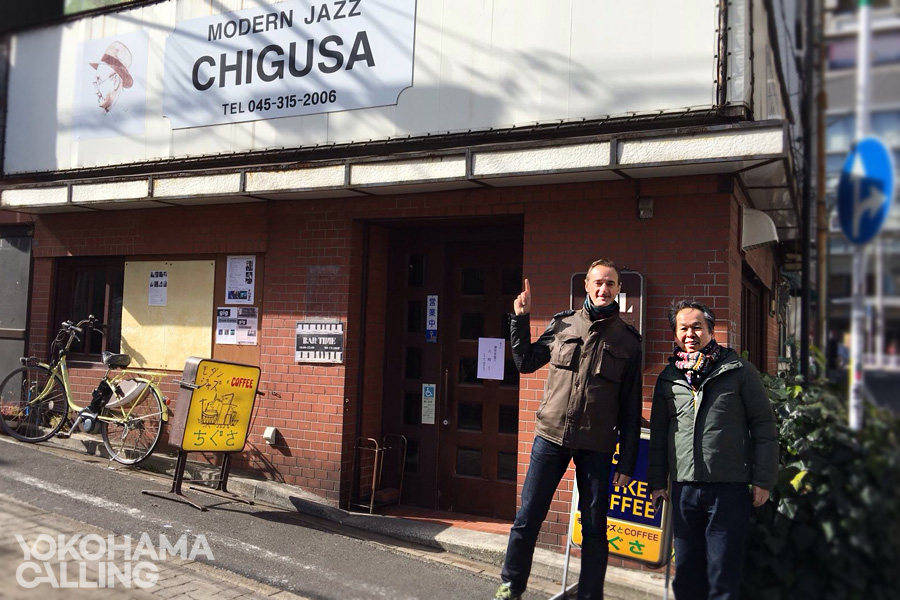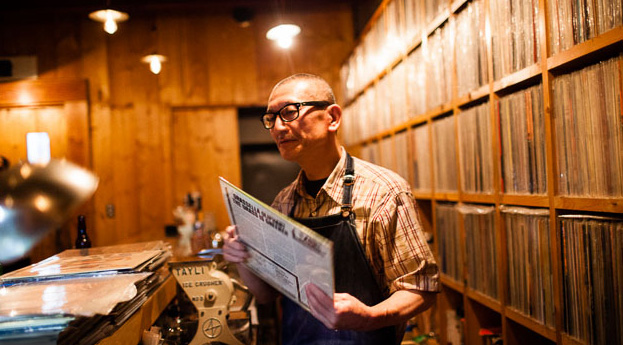Over a century ago, jazz music burst into Japan through Yokohama port.
Ocean liners would bring passengers and ships’ bands from all over the world through Japan’s maritime gateway. Travelling musicians would head for the bars and clubs to drink, dance and make music. The local appetite for that new ‘hot jazz’ sound was insatiable and its popularity spread rapidly. Jazz cafes and bars sprung up across the city playing the latest discs imported from America. Places, such as the legendary Jazz Cafe Chigusa.
Jazz Cafe Chigusa first opened in 1933 and, in its tiny space, several of Japan’s most famous jazz musicians – notably Toshiko Akiyoshi, Sadao Watanabe and Terumasa Hino – would hear the latest recordings from America and had the opportunity to play along with the records, hone their ‘chops’ and develop their own take on the music form, inspired by the great pioneers of jazz. Jazz aficionados would squeeze onto stools between walls stacked with giant speakers and extensive vinyl collections, listening to the likes of Bix Beiderbecke, Art Tatum, Louis Armstrong, Coleman Hawkings, Ella Fitzgerald, Duke Ellington, Bud Powell, Charlie Parker, Bill Evans and Miles Davis.
The proprietor of Jazz Cafe Chigusa, Mamoru Yoshida, whos contribution to jazz in Japan can not be overstated, died in 1994 aged 81. Despite many trials and tribulations, Jazz Cafe Chigusa is open today on a site near to the original Chigusa and is run by great admirers of Yoshida-san. Read more of this amazing story on The Japan Times website.

Jazz Cafe Chigusa inspired a large number of similar ‘jazz kissa’ (cafes) in Yokohama and all across Japan.
Japan continues to produce a great number of internationally acclaimed jazz artists, many of whom can be appreciated at regular appearances in the clubs and festivals of Yokohama, nearby Tokyo, throughout Japan and around the world.
Yokohama remains the capital of jazz in Japan today and hosts the annual Yokohama Jazz Promenade, the largest jazz festival in Japan. Jazz has become a metaphor for the city’s internationalisation and cosmopolitan atmosphere.



